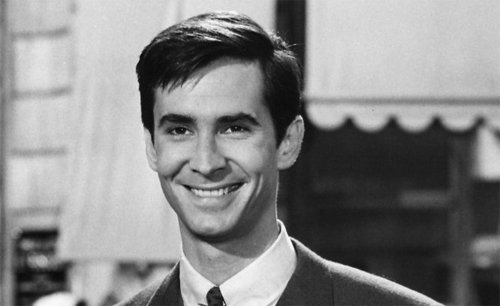Mixing Suspense with Horror
Genres, particularly when in the context of films, tend to merge with other genres, growing and changing as different elements blend together to create a final product that will elicit many different emotions from the viewers. One of the most common blends associated with film is the mixture of horror and thriller, which creates a movie that keeps viewers on the edge of their seat, apprehensive of what may come next. In Alfred Hitchcock's Psycho (1960), we are shown a combination of these two components, resulting in a movie that mixes possible real life nightmares with the element of surprise, which allows viewers to keep interest throughout the film.
The film starts out relatively slow, which stresses an importance of empathizing with Marion Crane, the lead female character. The viewer is able to watch Marion go through a series of moral dilemmas with her subconscious, and can identify with her desires to be with the man that she loves, as well as ensure that they are able to live a comfortable life. Marion shows emotions that would be accurate in real life versions of her situation - paranoia at the presence of the police, worry over being followed, guilt over her actions. All of these actions cause Marion to be relatable to people watching the movie. It is not until Norman Bates, the creepy motel owner, is introduced that viewers begin to turn their attention away from Marion.
At the introduction of Norman, the first impression that comes across is of a socially awkward man who still lives with his mother. Once again, viewers are able to sympathize with a character, feeling attached to this lost, lonely man who has not been able to escape from his mother's incapabilities. The true essence of the horror/thriller mix of the movie comes into play after the character of Norman Bates is established. Viewers watch in terror as Marion, who rhythmically begins showering, is brutally stabbed to death. The most interesting part of this whole scene is the camera angle. As Marion enjoys the warmth of the water, eyes are drawn to the background of the scene, where viewers are able to make out the door opening and a figure walking in. When the shower curtain is pulled away, however, we are unable to see the face of the culprit, and the camera angle switches to a view as if we, the viewers, are the ones doing the killing. All of this adds a twist, leaving the lingering question of who the murderer is. Collectively, viewers turn towards Norman Bates' mother, as we see Norman come back into the room and, in a distressed state, begin to clean up the aftermath of what has happened. Viewers can not help but feel sorry for this helpless man desperately trying to cover up his mother's crimes. This view is further iterated in Wood's article about Psycho, stating "that he is very unbalanced merely serves to provoke our protective instincts: he is also so helpless." Together, we believe that Norman is the victim of his mother's unstable mind.
As the film progresses, and another murder is committed, we find ourselves beginning to question Norman. During the second murder, the camera angle is switched once again, so that we are not able to see the killer's face. In the aftermath of this, we learn from the Sheriff that Norman Bates' mother has been dead for many years, which leaves the viewers wondering if Norman's mother was alive all along, or if some new woman inhabited the house. Nothing prepares the viewer for what actually happens, however. At the end of the movie, the final plot twist reveals itself, bringing about the shock that every good horror/thriller seeks to portray. Lila Crane, Marion's sister, ventures into the basement of the Bates' home, and find the desiccated corpse of Mrs. Bates, who has, true to the Sheriff's word, been dead for many years. The door behind her opens, and the figure of a woman is scene, but as this "woman" ventures into the light, the audience is truly horrified because standing there, dressed in his mother's clothes, is Norman Bates, a man who has adopted his mother's personality in an effort to erase the guilt he feels over murdering her and her lover. The shock is there, and many viewers can admit to not knowing the outcome of the film, or that such a twist in the plot would ensue.
When discussing horror as a film genre, thriller almost always closely ties in as well. When watching a horror film, it is the jumps and scares that we wait in anticipation for that overall cause the movie to have a terrifying reputation. Thriller and horror are compatible, allowing the horror movie industry to thrive off of "jump scaring" their audiences. Without this mix, thriller-only movies might lose the effect of scaring the viewers, and horror-only movies might not be able to frighten the viewers. Overall, Psycho is a movie that perfectly balances the blend of an event that could technically happen in real life, the horror element, along with unanticipated plot twists and scares, the thriller element.
Works Cited
Psycho. Dir. Alfred Hitchcock. 1960.
Wood, Robin. "Psycho: Hitchchock's Films Revisited." 1989: 142-51. Web.



No comments:
Post a Comment